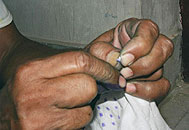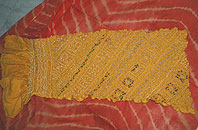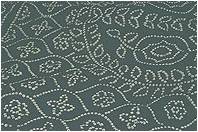Dyed Textile-Bandhani
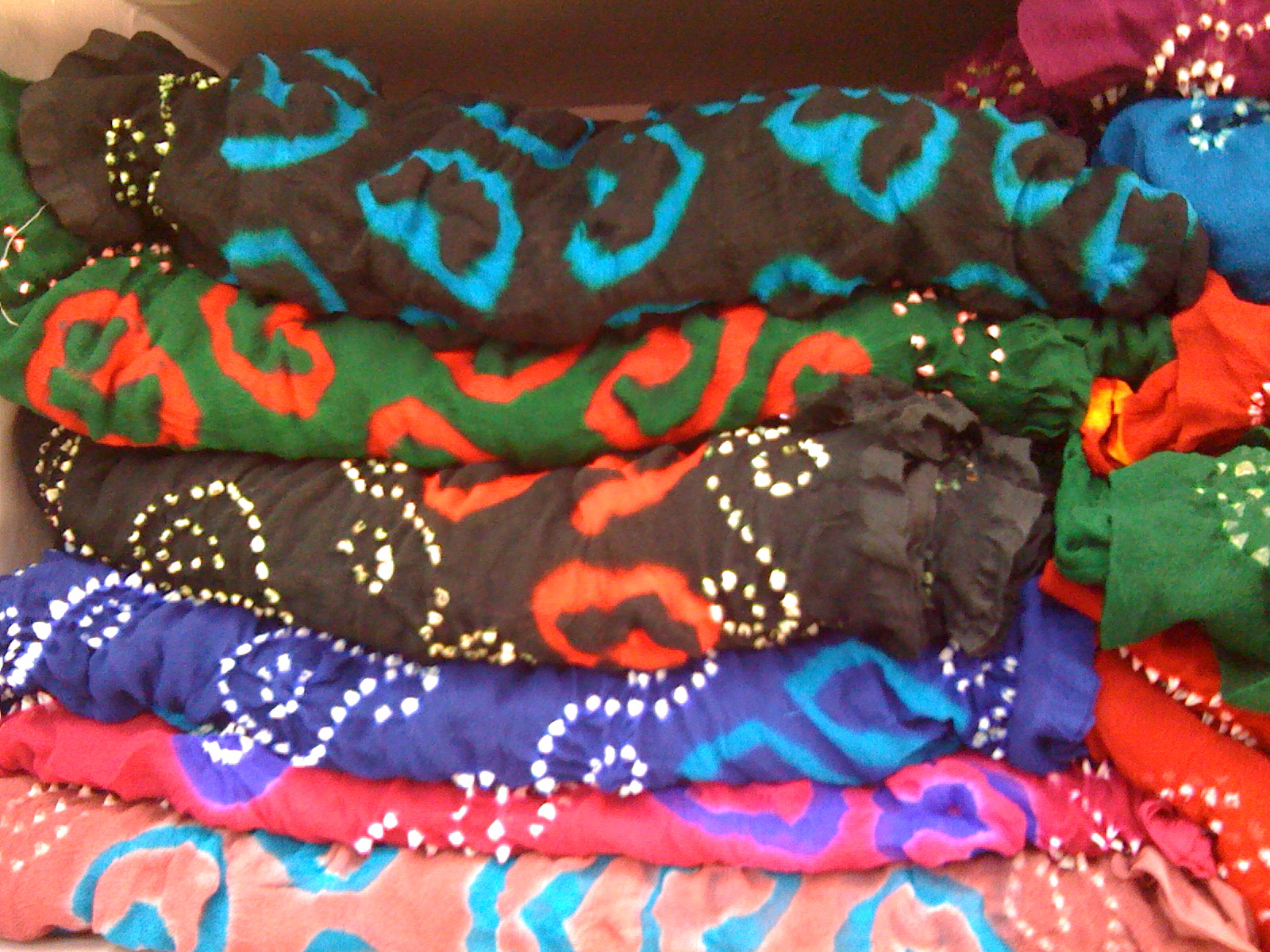
History
Different forms of tie and dye have been practiced in India. Indian tie & dye also known as Bandhani and Bandhej in Rajasthan is a traditional form of tie and dye which began about 5000 years ago. It is the oldest tie and dye tradition still in practice. Dyes date back to antiquity when primitive societies discovered that colors could be extracted from various plants, flowers, leaves, bark, etc., which were applied to cloth and other fabrics. Even though color was applied they didn't consider this dyeing. It was simply a form of embellishment. For them dyeing was the art of using color to form a permanent bond with fiber in a prepared dye bath. Natural colors have been used in India since ancient times and are considered to be the origin of the art of dyeing. Tie and dye cloths were the part of the merchandise of the early traders.
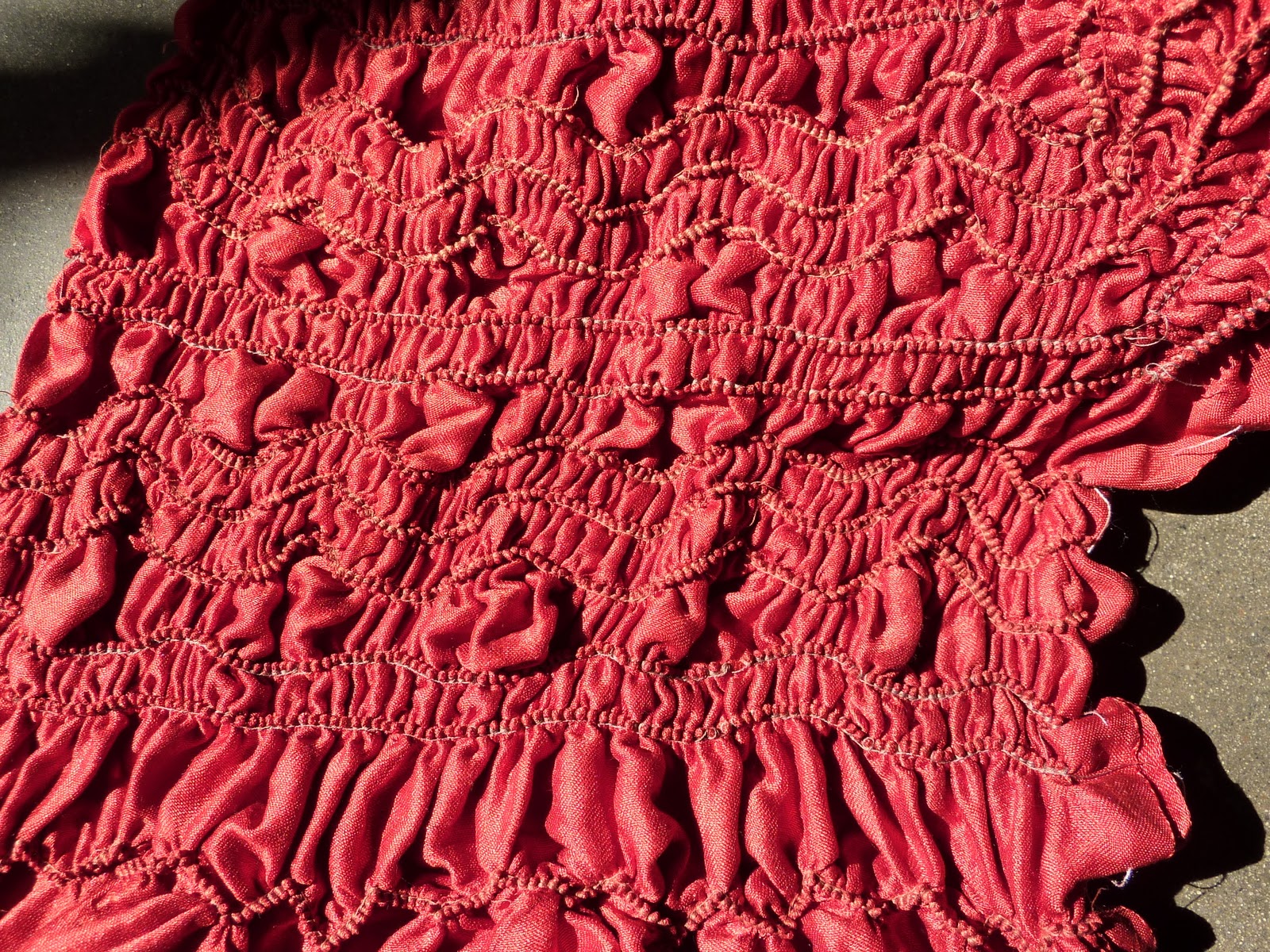 It is difficult to trace the origins of this craft to any particular area. According to some references it first developed in Jaipur in the form of Leheriya. But it is also widely believed that it was brought to Kutch from Sindh by Muslim Khatris who are still the largest community involved in the craft. Reference of this art is also found in Bana Bhatt's Harshacharitra and the patterns are seen on Ajanta sculptures.
It is difficult to trace the origins of this craft to any particular area. According to some references it first developed in Jaipur in the form of Leheriya. But it is also widely believed that it was brought to Kutch from Sindh by Muslim Khatris who are still the largest community involved in the craft. Reference of this art is also found in Bana Bhatt's Harshacharitra and the patterns are seen on Ajanta sculptures.
